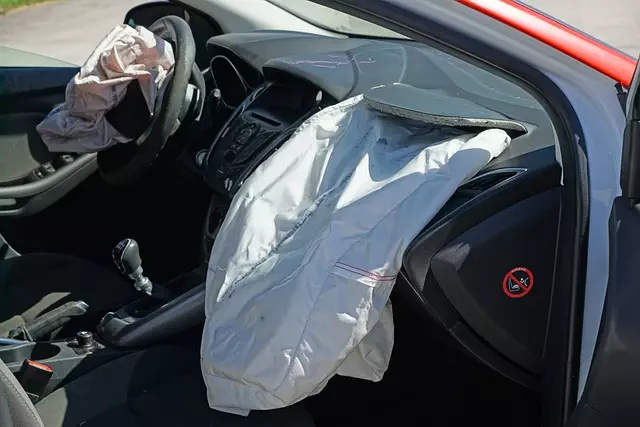Teen Driver Insurance is a specialized policy addressing young drivers' unique risks, promoting responsible adulthood through financial responsibility and safe driving practices. Rates are influenced by age, experience, vehicle safety features, academic performance, and community service. Key coverages include liability, collision, comprehensive, and personal injury protection (PIP). Balancing cost and comprehensive coverage, considering perks like discounts for good students and safe driving incentives, and reviewing policies before accidents occur can lead to affordable, effective Teen Driver Insurance. Prioritizing safe driving habits and adhering to policy clauses lower premiums and foster responsible behavior. Exploring discounts from insurers and state programs further reduces costs while enhancing road safety.
Navigating the world of teen driver insurance can be challenging for parents. This comprehensive guide aims to demystify the process, offering insights into key aspects that impact rates, coverages, and planning. We’ll explore factors affecting premiums, different policy types, and how to build a suitable plan. Additionally, we’ll highlight common mistakes to avoid and emphasize the importance of safe driving practices. By understanding these elements, parents can empower their teens to make informed decisions, ensuring they’re protected on the road.
Understanding Teen Driver Insurance: A Parent's Guide

Understanding Teen Driver Insurance is crucial for parents as they guide their adolescents into responsible adulthood. This type of insurance is specifically designed to cover young drivers, addressing unique risks associated with their inexperience on the road. By purchasing Teen Driver Insurance, parents not only ensure their children are legally covered but also teach them about financial responsibility and safe driving practices.
As a parent, it’s important to remember that Teen Driver Insurance often includes specific limitations and conditions. This may involve strict driver safety guidelines, such as limiting driving hours or requiring completion of a certified defensive driving course. Additionally, insurance companies might have partnerships with schools or organizations that offer teen-focused safety programs, encouraging parents and teens to participate in these initiatives for better coverage and safer driving habits.
Factors Affecting Teen Car Insurance Rates

Teen car insurance rates are influenced by several key factors, as insurers carefully consider the risks associated with young drivers. One of the primary concerns is the driver’s age and experience; teens often lack the driving maturity and expertise compared to more seasoned drivers, making them statistically higher-risk. This leads to higher premiums for Teen Driver Insurance policies.
Additionally, safety features in the vehicle play a significant role. Insurers may offer discounts for teen drivers who install advanced safety systems like collision avoidance or lane departure warnings. Similarly, good academic performance and participation in community service can also positively impact insurance rates, demonstrating responsible behavior that translates into safer driving habits.
Types of Coverages and Their Importance

When it comes to Teen Driver Insurance, understanding different coverages is key to making informed decisions. The primary types include liability, collision, comprehensive, and personal injury protection (PIP). Liability covers damages caused to others in an accident; collision coverage protects against damage to your own vehicle; comprehensive insurance includes both collision and other incidents like theft or vandalism; and PIP ensures medical expenses for the policyholder and passengers, regardless of fault.
Each type plays a crucial role in safeguarding teens on the road. Liability is essential as it shields against potential legal costs from accidents causing harm to others. Collision and comprehensive coverage are vital for protecting financial investments in vehicles. PIP, often mandated by states, ensures teens receive necessary medical care after an accident, fostering their well-being alongside legal protection.
Building a Comprehensive Insurance Plan

When crafting an insurance plan for a teen driver, it’s crucial to strike a balance between comprehensive coverage and cost-effectiveness. Start by evaluating risk factors specific to your teen, such as their driving experience, vehicle type, and safety record. Teen driver insurance often comes with parental involvement, ensuring peace of mind while giving teens the chance to learn responsible driving habits.
Consider additional perks like good student discounts, safe driving incentives, or usage-based monitoring programs. These features not only help keep premiums affordable but also encourage safe driving behavior. A well-designed teen driver insurance policy should protect against financial losses in case of accidents, theft, or damage, ensuring both the peace of mind of parents and the safety of their young drivers on the road.
Common Mistakes Teens (and Parents) Make

Teens and parents alike often make common mistakes when considering teen driver insurance. One such error is waiting until an accident occurs to start shopping around for coverage. This can lead to higher premiums down the line. It’s crucial to compare different policies and providers before a teen even gets behind the wheel.
Another mistake is assuming that all teen driver insurance policies are created equal. Teenagers, depending on their age, driving history, and location, may face vastly differing costs. Parents should review policy details carefully, focusing on coverage limits, deductibles, and exclusions to ensure they’re getting the best value for their money.
The Role of Safe Driving Practices

For teen driver insurance holders, adopting safe driving practices is not just a moral responsibility but also a key factor in managing costs. Parents and teens should emphasize defensive driving techniques, such as maintaining a safe distance from other vehicles, adhering to speed limits, and avoiding distractions like mobile phones. These behaviors significantly reduce the risk of accidents and, consequently, lower insurance premiums.
Incorporating regular check-ins about driving habits can foster a culture of safety. Parents can guide their teens on making smart choices on the road, ensuring they understand the implications of risky behavior. As teen driver insurance policies often have specific clauses related to safe driving, adhering to these practices not only keeps costs manageable but also promotes responsible and safer driving habits for the long term.
Exploring Discounts and Savings Opportunities

When it comes to teen driver insurance, exploring discounts and savings opportunities can significantly reduce costs for both parents and teenagers. Many insurance providers offer special rates for good students, safe driving records, or even if policies are bundled with other services like home or life insurance. Taking advantage of these discounts not only saves money but also encourages responsible driving habits.
Parents should compare quotes from multiple insurers, as each company may have different criteria for discounts. Additionally, some states offer programs specifically designed to lower the cost of teen driver insurance. By being proactive and informed about available savings, families can secure more affordable coverage while ensuring their teen is protected on the road.



